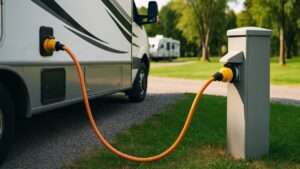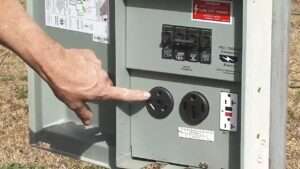CHOOSE YOUR ADVENTURE
Recent Posts
The difference between a 100Ah, 200Ah, and 300Ah RV lithium battery comes down to how much energy each can store and how long it can power your RV appliances and electronics. A higher...
The difference between pure sine vs modified sine inverters for RVs comes down to power quality and compatibility. Pure sine inverters create smooth, grid-like electricity that safely runs...
Lithium iron phosphate (LFP or LiFePO4) batteries need low-temp charge protection because charging below freezing can cause lithium plating, permanent capacity loss, and even safety risks...
How to plan RV shore power loads (15A/30A/50A) comes down to knowing how much electricity your RV uses and matching it to the service available at the campground. By understanding the limits...
Voltage drop in 12V RV wiring is the reduction of voltage as power moves from the battery to your appliances. It happens because wires have resistance, and longer or thinner runs cause more...
An RV inverter vs converter comparison comes down to power direction. A converter changes AC shore power into DC to charge your batteries and run 12-volt systems. An inverter does the...
If you are looking for the most secure trailer hitch locks in 2025, this guide highlights our top-tested picks for every trailer type and budget. After testing the top coupler locks...
If you’re looking for the best RV backup camera in 2025, this guide ranks the top wireless, solar, magnetic, and wired systems for safer maneuvering and stress-free parking. Testing, leading...
The main difference between a 30-amp and a 50-amp RV system is power capacity. A 30-amp hookup supplies 120 volts at 3,600 watts through a three-prong plug, making it suitable for smaller...








